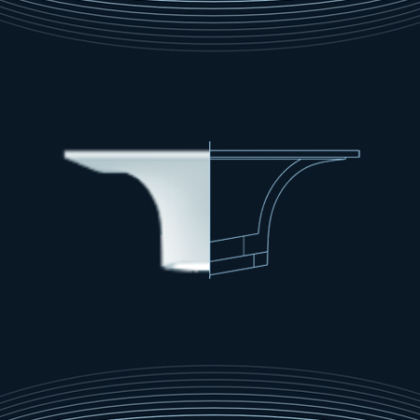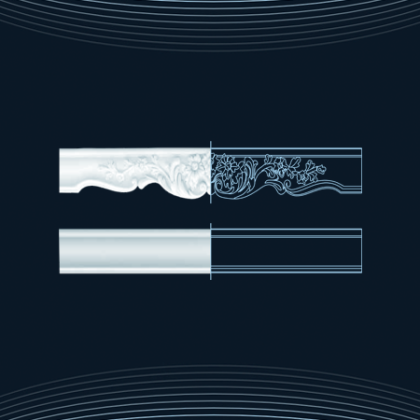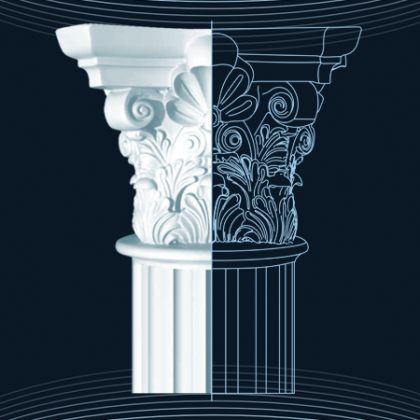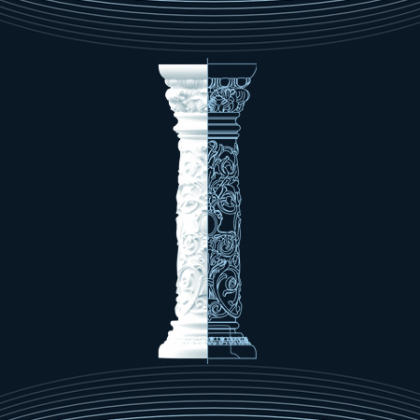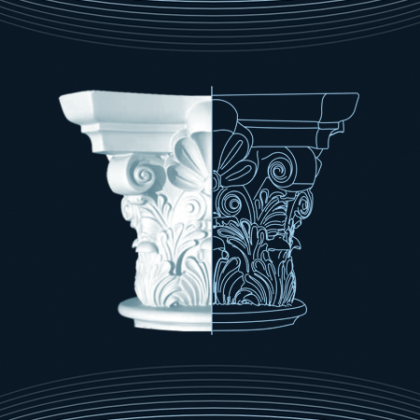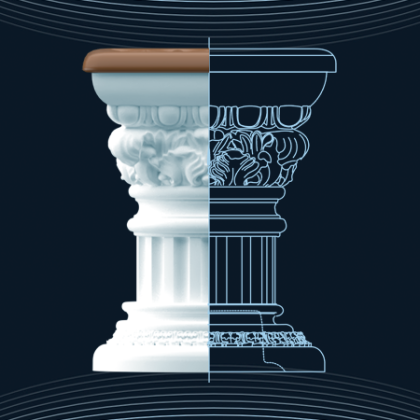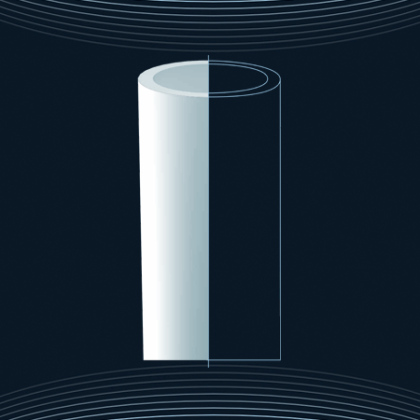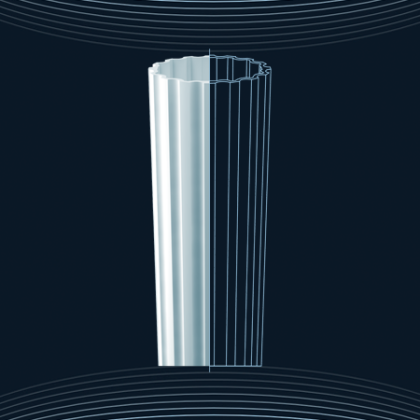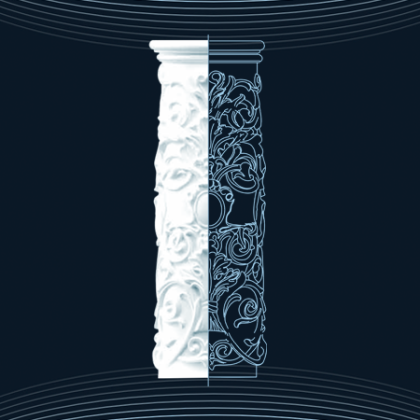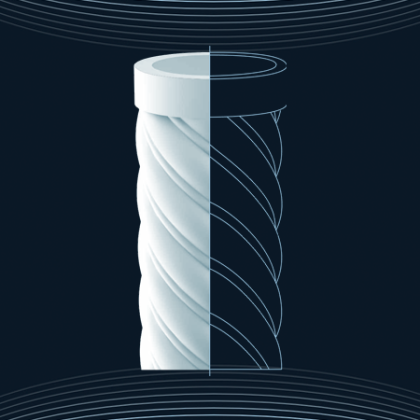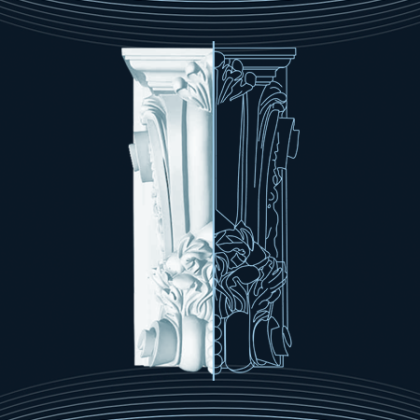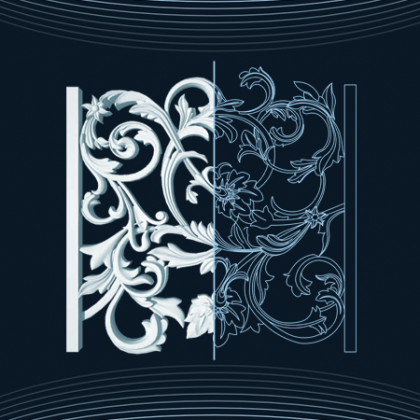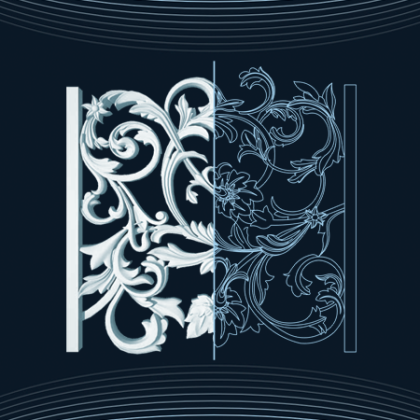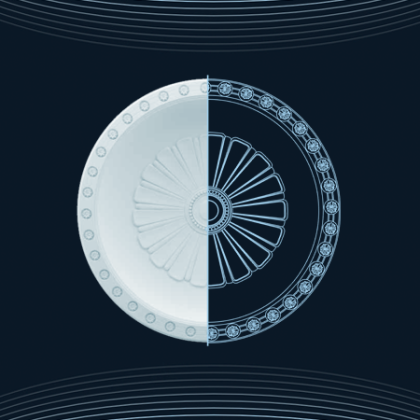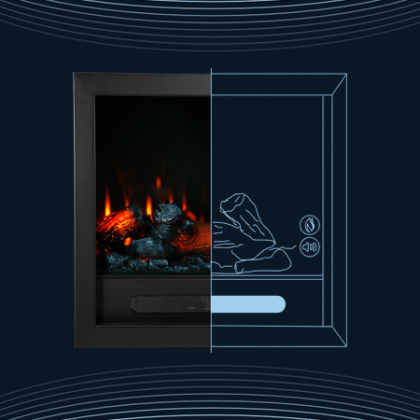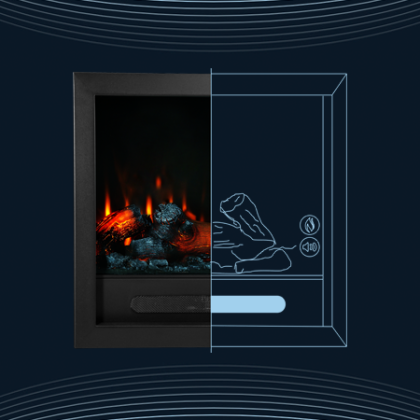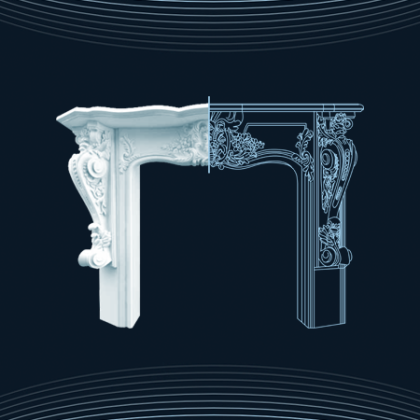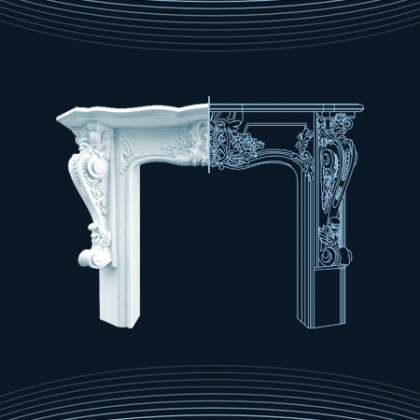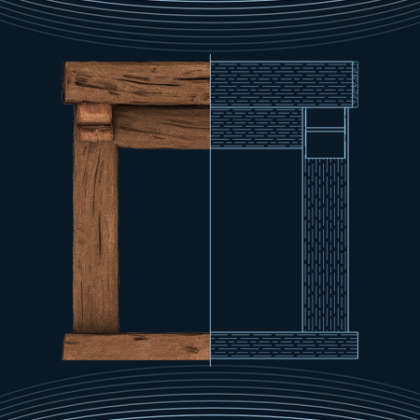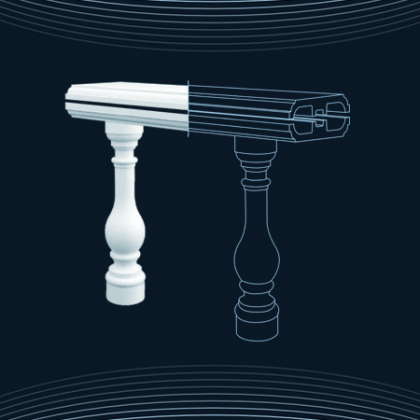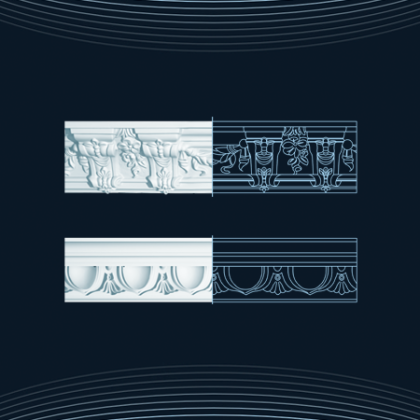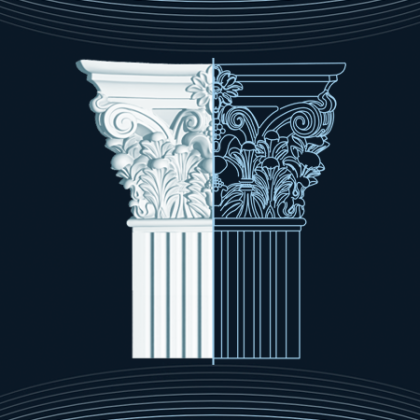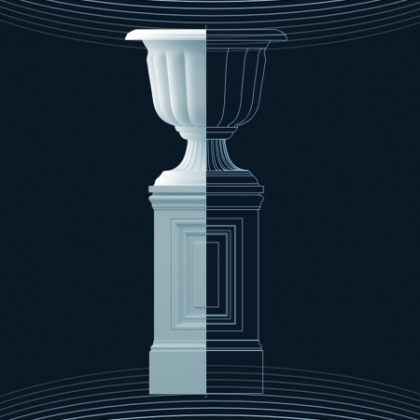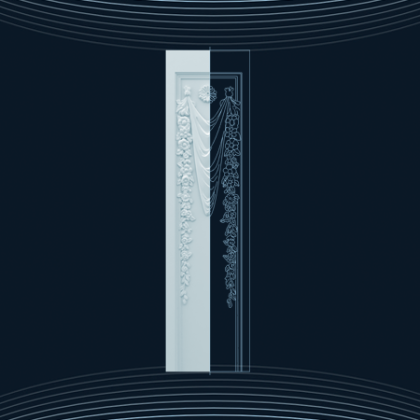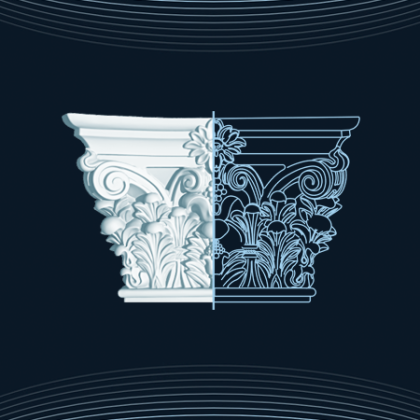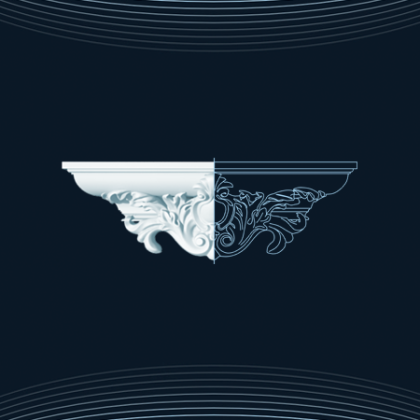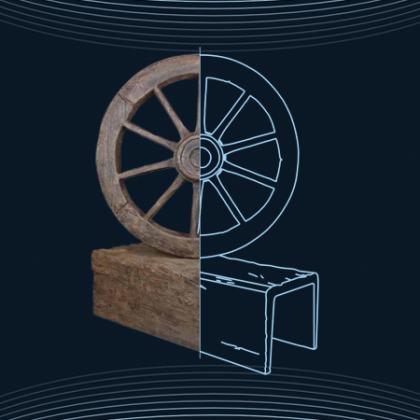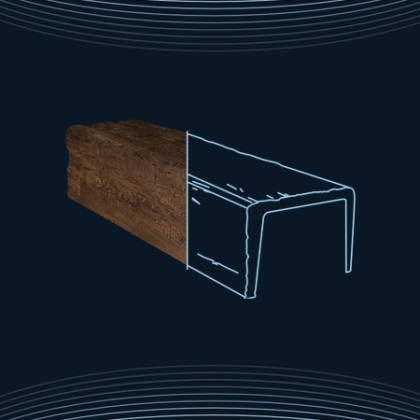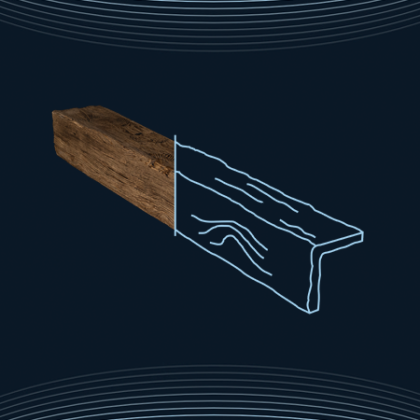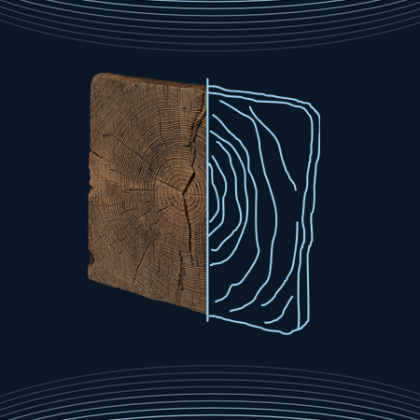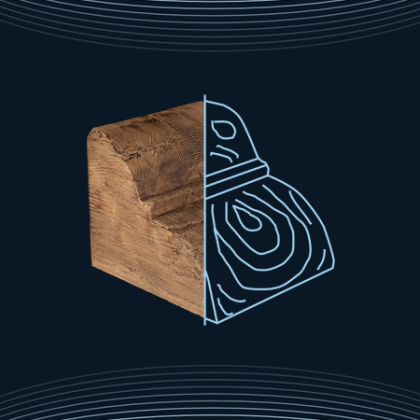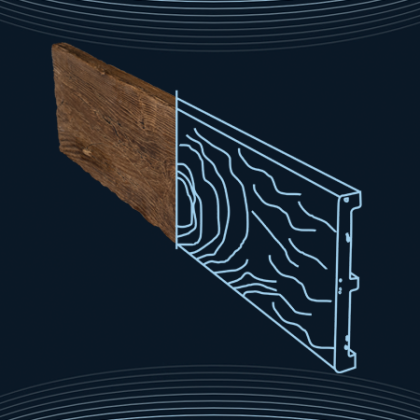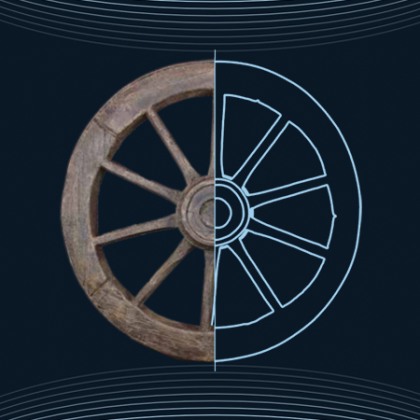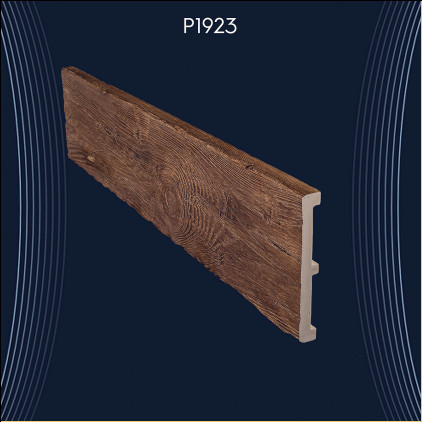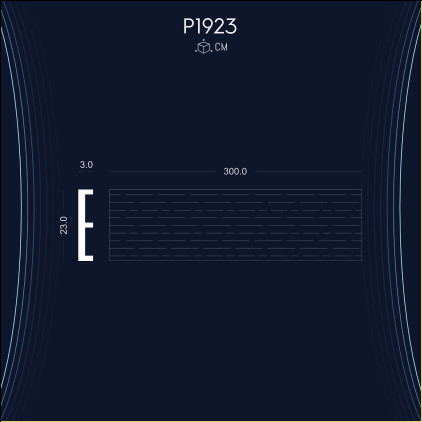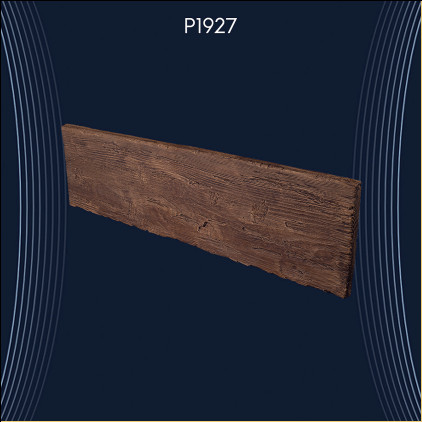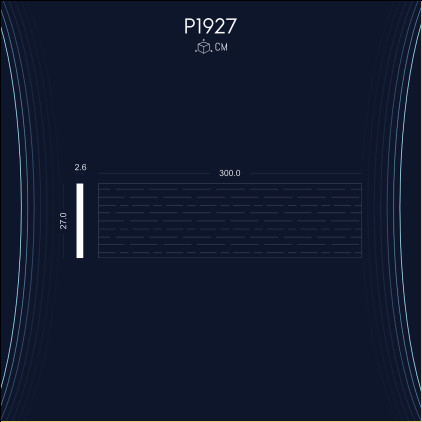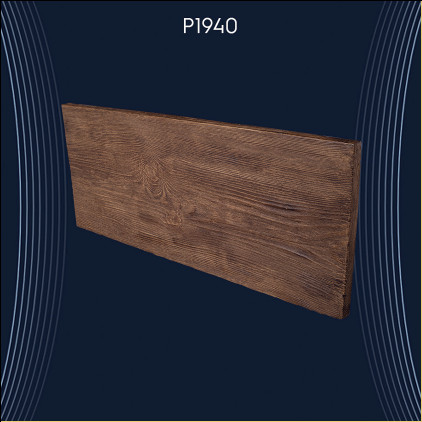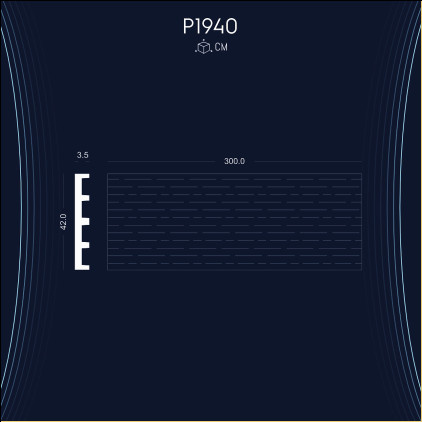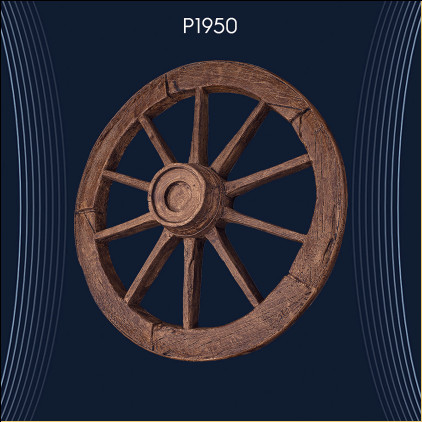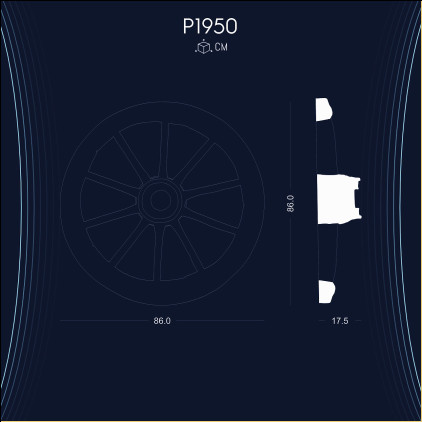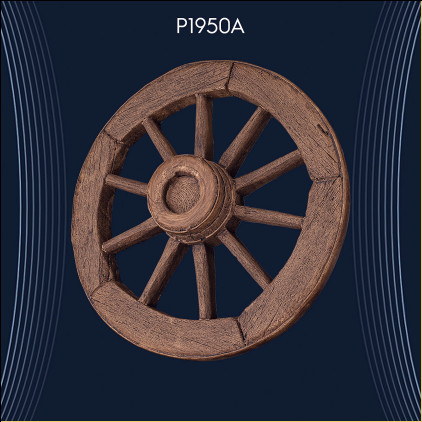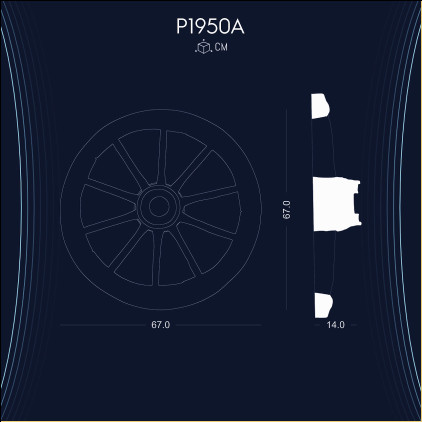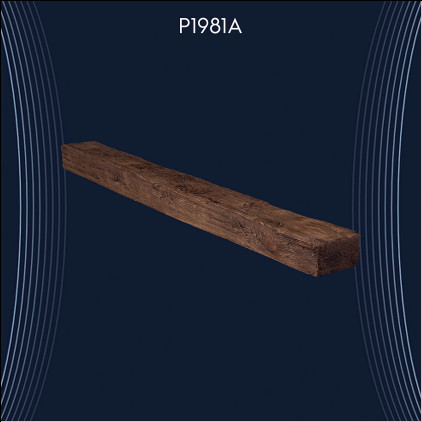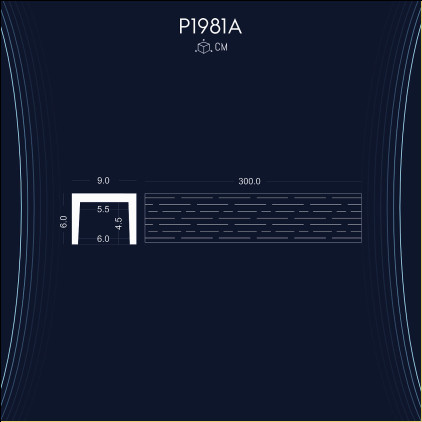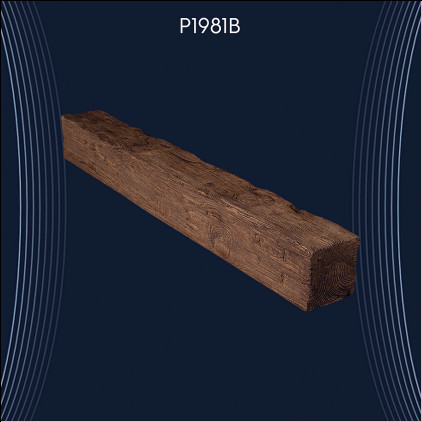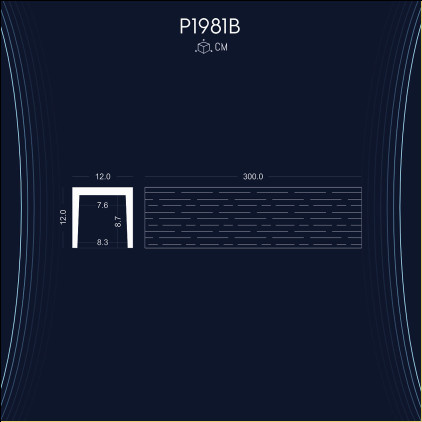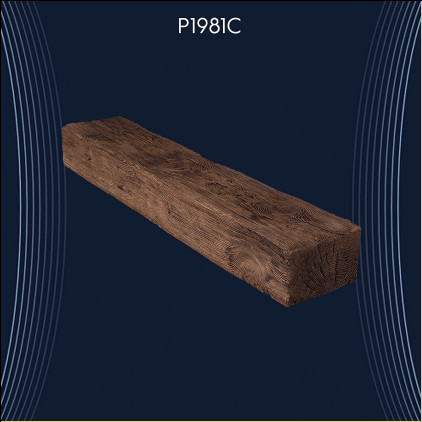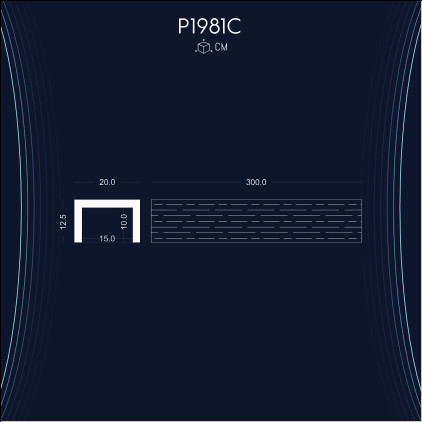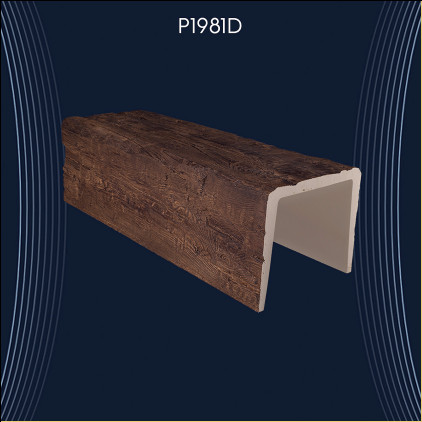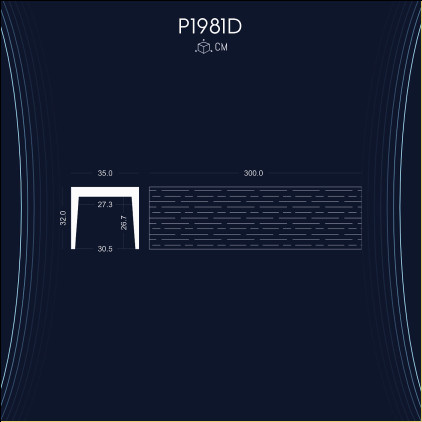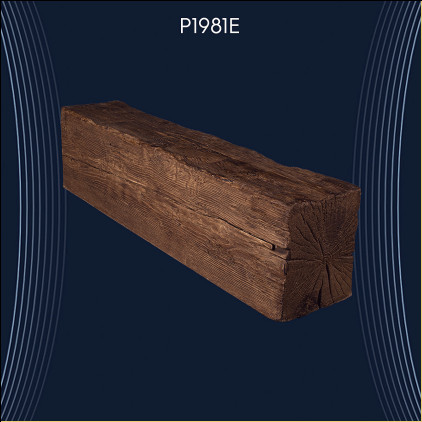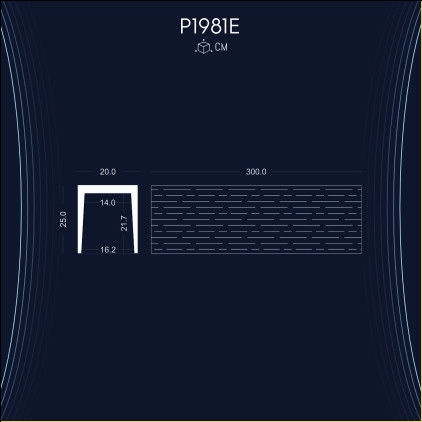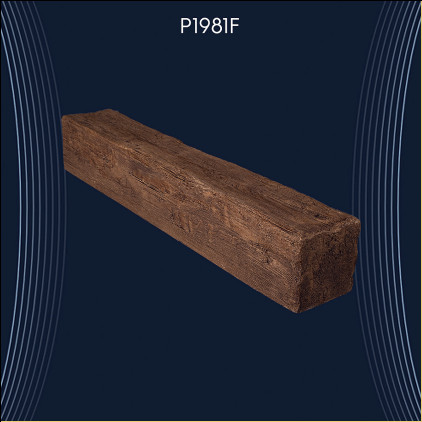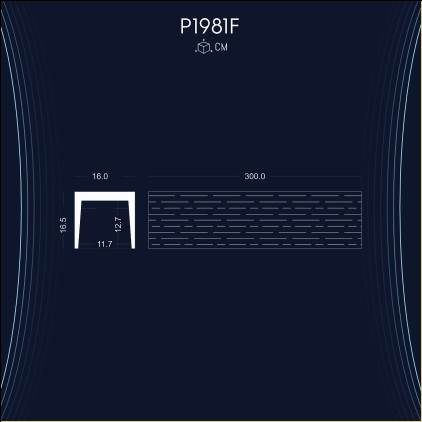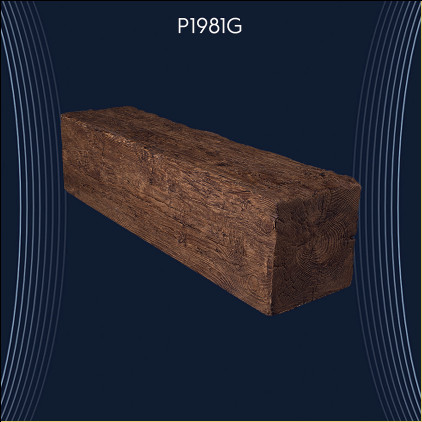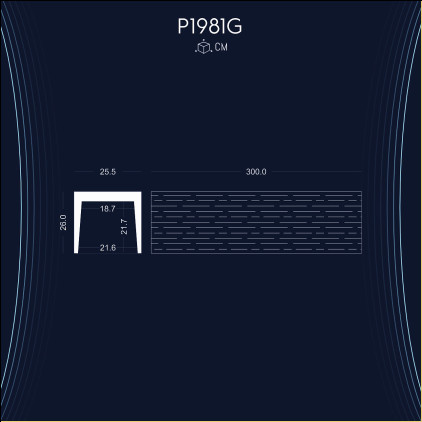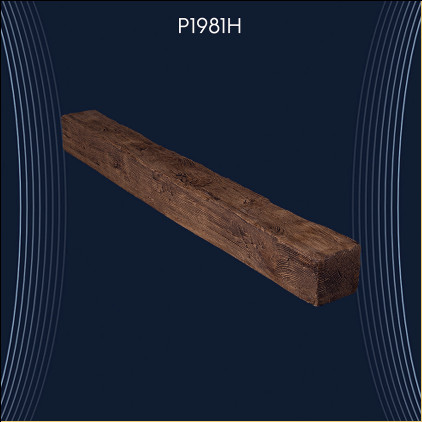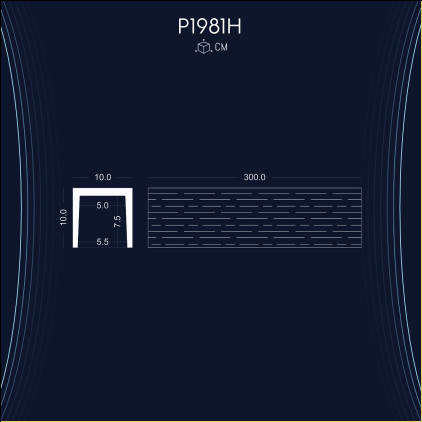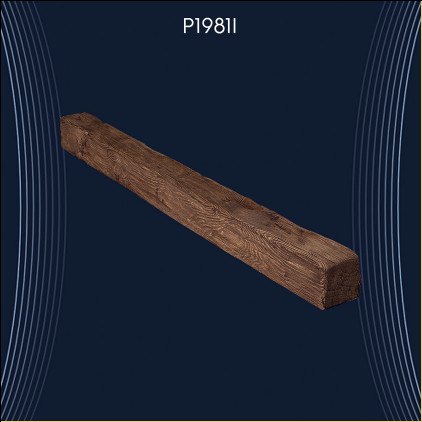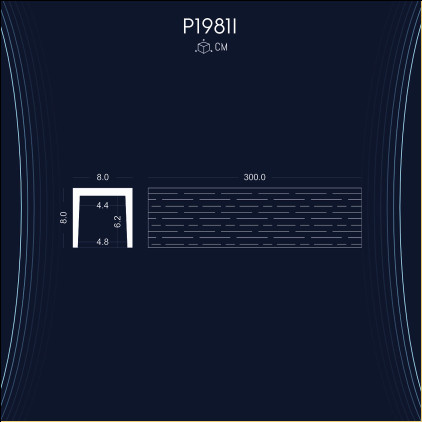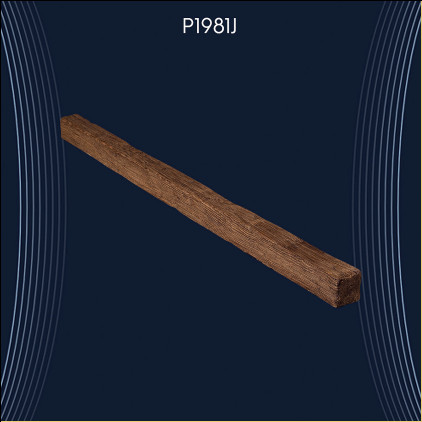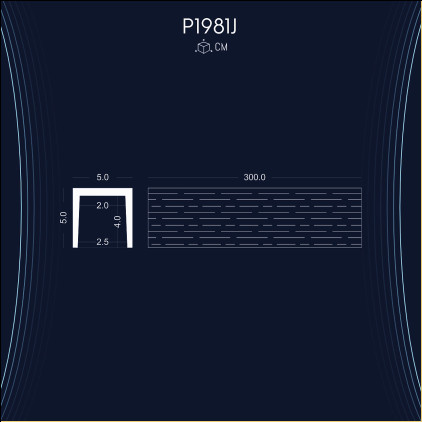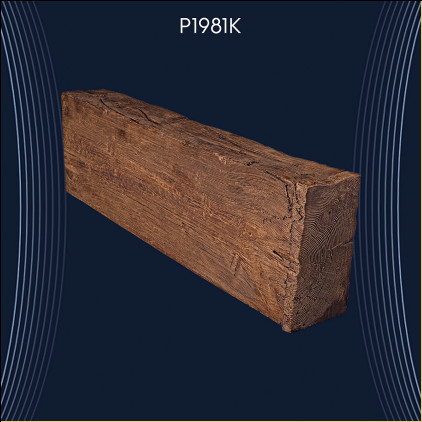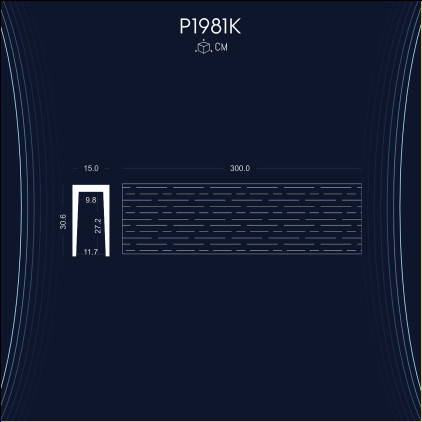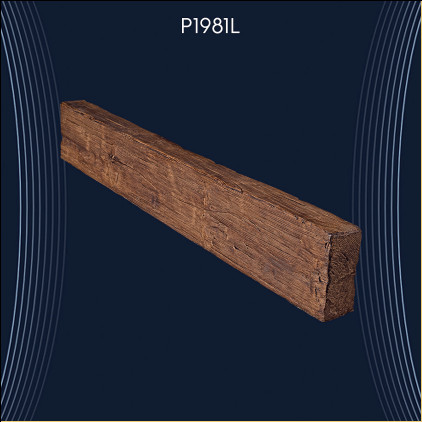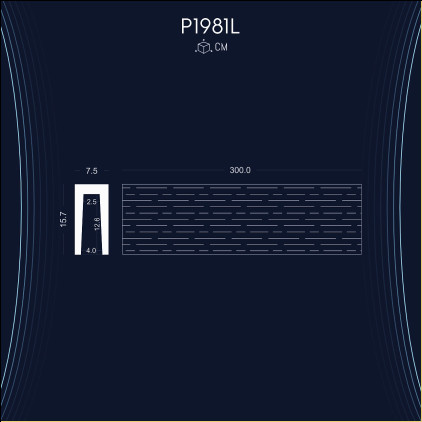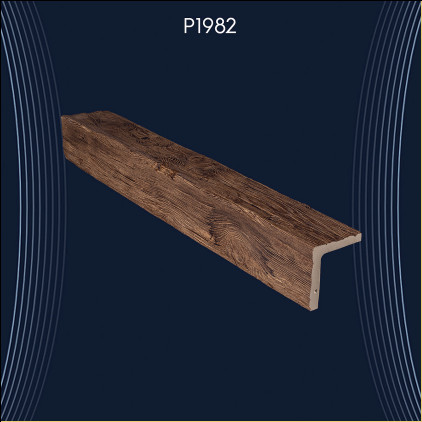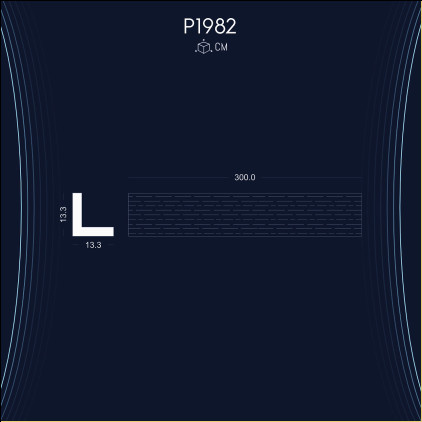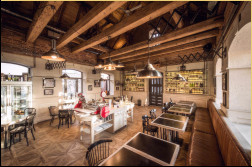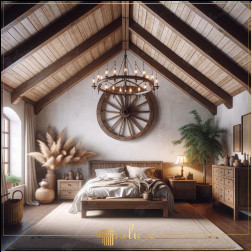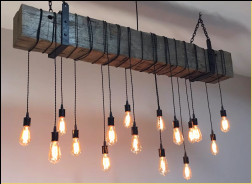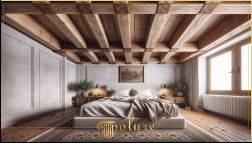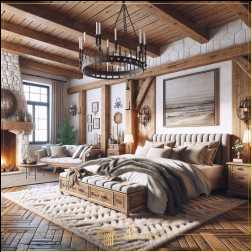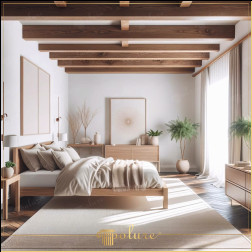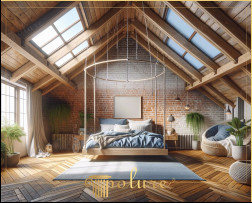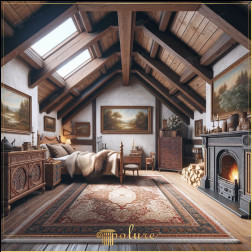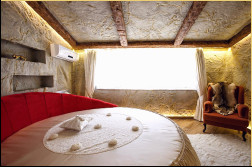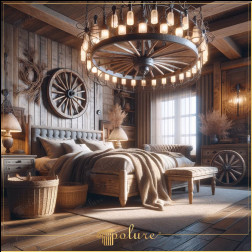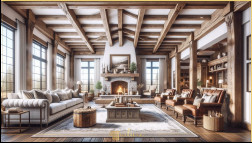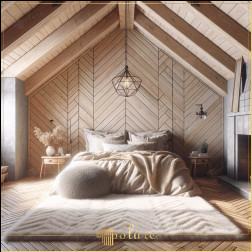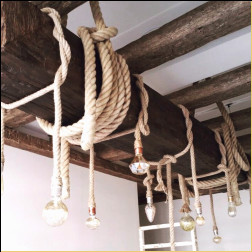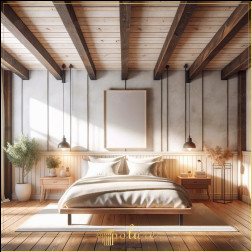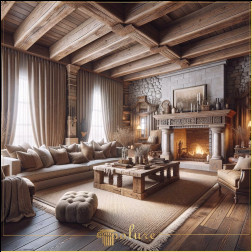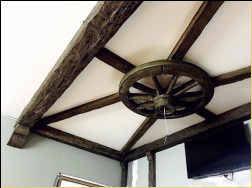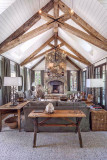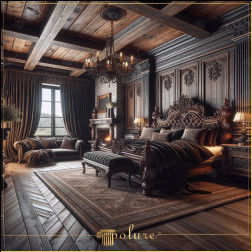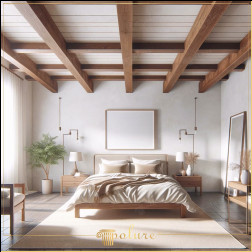Products
Polyurethane Wood Wheel Decor P1950: Innovative Wooden Wagon Wheel Decoration Designs and Ideas
733.70 lei 660.33 lei
Polyurethane log prices refer to the cost of decorative ceiling logs made from polyurethane.
Polyurethane logs have emerged as a popular and innovative solution for adding a rustic and natural charm to interiors without the drawbacks of real wood. These faux logs, made from polyurethane, a type of polymer, offer the appearance of real wood while being lighter, more durable, and resistant to decay, pests, and moisture. This makes them an ideal choice for decorative ceiling beams, log paneling, and other architectural details in both residential and commercial settings. The benefits of using polyurethane logs over traditional wood are numerous. They are significantly lighter, which simplifies the installation process and reduces the structural load on buildings. Their resistance to moisture and pests ensures a long-lasting aesthetic without the need for constant maintenance or replacement. Additionally, polyurethane logs can be molded into a variety of shapes and sizes, allowing for custom designs that fit any space perfectly. Decorative ceiling log models come in a range of styles, from rustic to modern, to match any interior design theme. They can be used to create dramatic ceiling beams, enhance the ambiance of a room with subtle accents, or even frame fireplaces for a cozy, cabin-like feel. With advancements in manufacturing, these logs can now replicate the texture, color, and grain of real wood so closely that it becomes difficult to distinguish them from the real thing. The cost of polyurethane logs can vary widely based on the size, complexity of the design, and the quality of the material. Generally, they are considered a cost-effective alternative to real wood logs, especially when factoring in their longevity and minimal maintenance requirements. Prices can range from affordable options suitable for simple decorative applications to more premium models designed for high-end architectural projects. In conclusion, polyurethane logs offer a practical and attractive solution for incorporating wood-like elements into interior designs. Their versatility, durability, and cost-effectiveness make them a popular choice among homeowners, interior designers, and architects alike. Whether you're looking to add a touch of rustic charm or aiming for a more sophisticated look, decorative ceiling log models made from polyurethane provide a wide range of options to bring your vision to life.Polyurethane Log Prices & Decorative Ceiling Log Models
Benefits of Polyurethane Logs
Decorative Ceiling Log Models
Polyurethane Log Prices
The significance of Polyurethane Log Prices and Decorative Ceiling Log Models in history lies in their role in interior design and architecture. They represent a modern approach to decorating spaces, combining aesthetic appeal with practicality and cost-effectiveness. These models have evolved over time to offer diverse design options, reflecting changes in taste and technology.
The evolution of interior design has seen myriad materials and techniques employed to enhance the aesthetic appeal and functionality of living spaces. Among these, the use of polyurethane logs in decorative ceiling models stands out as a significant innovation. This article explores the historical place of polyurethane log prices in the broader context of interior design, focusing on their impact on decorative ceiling models. Polyurethane, a versatile polymer, emerged as a popular material for decorative purposes in the mid-20th century. Its introduction revolutionized the construction and interior design industries, offering an affordable, durable, and aesthetically pleasing alternative to traditional materials like wood and stone. Polyurethane logs, in particular, gained popularity for their use in creating stunning, realistic ceiling beams and architectural details that mimic the natural beauty of wood. Decorative ceiling models have long been a symbol of luxury and craftsmanship. The introduction of polyurethane logs significantly lowered the cost and complexity of adding elaborate ceiling designs to homes and commercial spaces. Unlike natural wood, polyurethane is lightweight, resistant to rot and pests, and does not warp or crack over time. This made it an ideal choice for intricate ceiling designs, from traditional coffered ceilings to modern geometric patterns. The historical significance of polyurethane log prices in decorative ceiling models can be attributed to their democratization of luxury interior design. Prior to their introduction, elaborate ceiling designs were often reserved for the wealthy, due to the high cost of materials and labor. Polyurethane logs made such designs more accessible to a broader audience, enabling homeowners to incorporate luxury design elements into their homes at a fraction of the cost. Furthermore, the evolution of polyurethane log prices reflects broader economic and technological trends. Initially, these products were relatively expensive due to the novelty of the material and the manufacturing process. However, as technology advanced and production methods improved, prices dropped, making polyurethane logs an even more attractive option for interior design projects. In conclusion, the place of polyurethane log prices in the history of decorative ceiling models is marked by innovation and accessibility. By providing an affordable alternative to traditional materials, polyurethane logs have played a pivotal role in the evolution of interior design, making luxury design elements accessible to a wider audience and influencing the aesthetic of modern living spaces.The Historical Significance of Polyurethane Log Prices in Decorative Ceiling Models
The Advent of Polyurethane Logs
Impact on Decorative Ceiling Models
Historical Significance
Conclusion
Polyurethane ceiling log prices and features of decorative models.
When it comes to interior decoration, the ceiling is often the last place considered for a makeover. However, the introduction of polyurethane ceiling logs has changed the game, offering an innovative and stylish way to add character to any room. These decorative elements mimic the look of real wood while providing benefits that traditional materials cannot match. Polyurethane ceiling logs are decorative elements made from a type of plastic called polyurethane. This material is known for its durability, lightweight, and resistance to moisture and pests. Unlike real wood, polyurethane does not warp, rot, or require regular maintenance, making it an ideal material for decorative purposes. With a variety of designs and finishes available, polyurethane ceiling logs can complement any interior style, from rustic to modern. They can be used to create a focal point in a room or to add warmth and texture to a space that lacks character. The cost of polyurethane ceiling logs can vary depending on the quality, design, and size. Generally, they are an affordable option compared to real wood logs, with prices that can accommodate a wide range of budgets. It is important to consider the long-term benefits and savings in maintenance costs when evaluating the price. Polyurethane ceiling logs offer a unique blend of aesthetic appeal and practical benefits. Their durability, low maintenance, and versatility make them an excellent choice for anyone looking to enhance their interior decor. Whether you're aiming for a traditional or contemporary look, polyurethane ceiling logs can provide the perfect finishing touch to your space.Polyurethane Ceiling Log Prices and Properties
What are Polyurethane Ceiling Logs?
Benefits of Polyurethane Ceiling Logs
Decorative Possibilities
Pricing
Conclusion
Polyurethane log prices and decorative ceiling log models for decoration are distinct categories.
Polyurethane is a remarkably versatile material that finds applications across various industries, from construction and furniture to automotive and textile. Its unique properties, such as flexibility, durability, and resistance to abrasion, temperature, and chemicals, make it an ideal choice for a wide range of products. This article delves into the diverse usage areas of polyurethane, focusing on its role in shaping log prices and enhancing interior decorations with decorative ceiling models. The application of polyurethane in the logging industry primarily revolves around its protective coatings. These coatings extend the life of wooden logs by shielding them from moisture, insects, and decay. Consequently, this protection can influence log prices by preserving the quality and longevity of the wood, thereby reducing the need for frequent replacements or repairs. Polyurethane coatings ensure that logs maintain their structural integrity and aesthetic appeal over time, which is critical in construction and furniture making. Moving from the outdoors to the indoors, polyurethane's role in home and commercial space decoration is both functional and artistic. Decorative ceiling models made from polyurethane offer an attractive alternative to traditional materials like plaster or wood. These lightweight, durable models can mimic the look of intricate carvings and elaborate designs, allowing for a wide range of aesthetic options without the weight and complexity of working with more substantial materials. Polyurethane ceiling models are not only easier to install but also require minimal maintenance, making them a popular choice for enhancing the visual appeal of interiors. The diverse applications of polyurethane, from influencing log prices through protective coatings to creating stunning decorative ceiling models, underscore its versatility and utility in various domains. As technology advances, the potential uses for polyurethane continue to expand, promising even more innovative solutions for both practical and aesthetic needs. Whether in the logging industry or interior decoration, polyurethane's role is both transformative and enduring, offering a glimpse into the material's future possibilities.Exploring the Versatile Applications of Polyurethane: From Log Prices to Decorative Ceiling Models
Polyurethane in Log Prices
Decorative Ceiling Models with Polyurethane
Conclusion
Decorative ceiling log models prices
When it comes to interior decoration, the ceiling is often one of the spaces that can transform the aesthetic of a room significantly. Among the various materials used for ceiling decorations, polyurethane logs have gained popularity for their lightweight, durability, and ease of installation. These logs are designed to mimic the appearance of real wood while offering a cost-effective and maintenance-free alternative. Polyurethane logs are an excellent choice for decorative ceiling models due to several reasons. Firstly, they are incredibly lightweight, making them easy to install without the need for heavy-duty support structures. Secondly, they are resistant to moisture, mold, and insects, ensuring that your decorative ceiling remains pristine for years to come. Lastly, polyurethane is a versatile material that can be molded into various shapes and sizes, allowing for a wide range of decorative options. The price of polyurethane logs for decorative ceilings can vary widely based on several factors. These include the size of the logs, the complexity of the design, and the quality of the material. On average, prices can range from a few dollars for simple, small logs to several hundred dollars for large, intricately designed logs. It's important to consider not only the initial cost but also the long-term benefits such as durability and low maintenance when evaluating the price. When selecting polyurethane logs for your ceiling, consider the following factors: Polyurethane logs are a fantastic option for those looking to add a touch of elegance and warmth to their ceilings without the hassle of real wood. By understanding the factors that influence their prices and knowing what to look for, you can make an informed decision that enhances the beauty of your home while staying within your budget.Polyurethane Log Prices for Decorative Ceiling Models
Why Choose Polyurethane Logs for Your Ceiling?
Understanding Polyurethane Log Prices
How to Select the Right Polyurethane Logs for Your Ceiling
Conclusion
Can decorative polyurethane logs be used on exterior walls?
Decorative polyurethane logs have become increasingly popular for interior design, particularly for creating a rustic or natural aesthetic on ceilings and walls. However, homeowners and designers often wonder if these versatile decorations can also be used on exterior walls. The answer is yes, but with some considerations. Polyurethane logs offer several advantages for exterior applications. Firstly, they are highly durable and resistant to weather conditions, including rain, snow, and UV radiation, making them suitable for outdoor use. Additionally, they are lightweight, which makes them easy to install on exterior walls without the need for heavy support structures. Polyurethane is also resistant to pests and decay, ensuring that the exterior of your home remains beautiful for years to come. While polyurethane logs are suitable for exterior use, there are some important considerations to keep in mind. It is crucial to ensure that the logs are properly sealed and installed to prevent water ingress, which could lead to damage over time. Moreover, choosing high-quality polyurethane logs from reputable manufacturers is important to ensure that they are formulated for outdoor use and have enhanced durability and resistance to environmental factors. In conclusion, polyurethane logs can be a fantastic addition to exterior walls, offering the charm and warmth of natural wood without the maintenance and durability concerns. By selecting the right products and ensuring proper installation, homeowners can enjoy the beauty of decorative logs on their exterior walls for many years.Using Polyurethane Logs on Exterior Walls
Advantages of Polyurethane Logs for Exterior Use
Considerations for Exterior Installation
Conclusion
Yes, decorative ceiling logs made of polyurethane can be painted.
Decorative ceiling log models made from polyurethane are a popular choice for adding a rustic or natural charm to interiors. These lightweight, durable, and easy-to-install logs can transform the aesthetic of any room. A common question that arises is whether these polyurethane logs can be painted to match specific decor or color schemes. The short answer is yes. Polyurethane is a versatile material that can be painted, allowing for a wide range of customization options. However, the success of painting polyurethane logs depends on the preparation process and the type of paint used. Before painting, it's crucial to properly prepare the surface of the polyurethane logs. This typically involves cleaning the logs to remove any dust, dirt, or grease. A light sanding may also be necessary to create a surface that the paint can adhere to more effectively. Acrylic or latex-based paints are generally recommended for polyurethane surfaces. These types of paint adhere well to polyurethane and are flexible, which is important for materials that may expand or contract slightly with temperature changes. It's also advisable to use a primer designed for plastic or synthetic surfaces to ensure better paint adhesion and durability. When painting polyurethane logs, using a brush, roller, or spray paint can achieve different finishes. Spray painting can provide a smooth, even coat, while brushes and rollers can create a more textured appearance. Applying multiple thin coats of paint, rather than one thick coat, can help prevent drips and ensure a more uniform color. With the right preparation and materials, painting polyurethane log models for decorative ceilings can be a straightforward process. This allows for endless customization options to fit any design aesthetic. Whether aiming for a natural wood look or a more vibrant color, painting polyurethane logs can enhance the overall appearance of your decorative ceiling.Painting Polyurethane Log Models for Decorative Ceilings
Can Polyurethane Logs Be Painted?
Preparation
Choosing the Right Paint
Application
Conclusion
Applying polyurethane and checking prices for decorative ceiling log models: 1. Choose the right type of polyurethane for your project, considering the area's exposure to wear and sunlight. 2. Prepare the surface by cleaning it thoroughly and sanding if necessary to ensure it's smooth. 3. Apply the first coat of polyurethane using a brush or roller, working in the direction of the grain. Let it dry as per the instructions. 4. Sand the surface lightly with fine-grit sandpaper, then clean off the dust. 5. Apply the second coat and let it dry completely. 6. For a more durable finish, you might want to apply a third coat, repeating the sanding and cleaning process before application. For decorative ceiling log models, compare prices and styles from various suppliers. Look for logs that fit your aesthetic preferences and budget, and consider their durability and ease of installation.
Decorative ceiling logs are a unique and eye-catching addition to any room. Made from polyurethane, these logs offer the beauty of wood without the weight or susceptibility to decay. Applying polyurethane finish to these logs not only enhances their appearance but also protects them from damage. Here's a guide on how to apply polyurethane to decorative ceiling log models effectively. Start by ensuring the surface of the polyurethane log is clean, dry, and free of any dust or grease. Lightly sand the surface with fine-grit sandpaper to create a smooth base for the polyurethane to adhere to. Wipe away any dust from sanding with a clean, damp cloth and allow the log to dry completely. There are two main types of polyurethane finishes: water-based and oil-based. Water-based polyurethane dries quickly, has a low odor, and cleans up easily with water. Oil-based polyurethane offers a more durable finish and richer color, but it takes longer to dry and has a stronger odor. Consider the environment where the log will be placed and choose the type that best suits your needs. Apply the polyurethane using a high-quality brush or a foam applicator. Start from one end and work your way to the other, following the grain of the log. Apply thin, even coats to prevent drips and runs. If you're using water-based polyurethane, you can apply a second coat after 2-4 hours. For oil-based polyurethane, wait at least 24 hours before applying the next coat. Lightly sand between coats with fine-grit sandpaper to ensure a smooth finish. Allow the final coat of polyurethane to dry thoroughly. Water-based polyurethane typically dries within a few hours, but it's best to wait 24 hours before handling the log. Oil-based polyurethane may take up to 24 hours to dry to the touch and up to 72 hours to fully cure. Ensure the room is well-ventilated and avoid exposing the log to dust or moisture while it dries. The price of polyurethane logs can vary based on size, design, and manufacturer. Decorative ceiling log models are generally more expensive than standard logs due to their intricate designs and the high-quality materials used. To get the best deal, compare prices from several retailers and consider purchasing in bulk if you need multiple logs for a large project. Applying polyurethane to decorative ceiling logs not only enhances their beauty but also protects them for years to come. With the right preparation, application, and care, your polyurethane logs will maintain their stunning appearance and continue to add character to your home.Applying Polyurethane on Decorative Ceiling Logs
Preparation
Choosing the Right Polyurethane
Application
Drying and Curing
Polyurethane Log Prices
Polyurethane decorative ceiling logs are more durable and have a more realistic appearance, while styrofoam models are lighter and less expensive but may not look as authentic.
When it comes to decorative ceiling log models, two popular materials stand out: polyurethane and styrofoam. Both materials offer unique benefits and limitations for interior decoration. Understanding the differences between them can help homeowners and designers make informed decisions for their projects. Polyurethane is a type of plastic that is highly versatile and durable. Polyurethane ceiling logs are known for their strength and resilience. They are resistant to moisture, which makes them an excellent choice for environments with varying humidity levels. Polyurethane logs are also resistant to mold and mildew, further enhancing their durability. Their realistic appearance is another significant advantage, as they can closely mimic the look and feel of real wood. Styrofoam, on the other hand, is a lightweight material made from expanded polystyrene (EPS). Styrofoam ceiling logs are easier to handle and install due to their light weight. They are an affordable option for those on a tight budget. However, styrofoam is less durable than polyurethane and may be prone to damage from impacts or punctures. It is also more susceptible to temperature fluctuations and may not perform as well in high humidity environments. The choice between polyurethane and styrofoam ceiling logs ultimately depends on the specific needs and preferences of the project. Polyurethane logs are better suited for high-end installations where durability and a realistic appearance are paramount. They are ideal for areas that experience a lot of wear and tear or where longevity is a concern. Styrofoam logs, while more cost-effective, are best suited for projects with limited budgets or where weight is a concern. They offer a practical solution for decorative purposes but may require more careful handling and maintenance. In conclusion, both polyurethane and styrofoam ceiling logs have their place in interior design. The choice between them should be based on the project's specific requirements, including budget, durability, and aesthetic preferences. By considering these factors, designers and homeowners can select the best material for their decorative ceiling log needs.Difference Between Polyurethane and Styrofoam Ceiling Logs
Polyurethane Ceiling Logs
Styrofoam Ceiling Logs
Comparing the Two
Conclusion
The difference lies in the types and prices of polyurethane logs used for decorative ceiling models.
When it comes to enhancing the aesthetic appeal of ceilings, decorative logs made of polyurethane offer a practical and visually appealing solution. However, understanding the differences in polyurethane log prices is crucial for anyone considering this option for their interior design projects. This article aims to shed light on these differences and what factors contribute to the variability in prices. One of the primary factors influencing the price of polyurethane logs for decorative ceilings is the quality and durability of the material. Higher-quality polyurethane logs, which are more durable and offer better aesthetics, will naturally command higher prices. These logs are designed to withstand the test of time, resist wear and tear, and maintain their appearance for years to come. The complexity of the design also plays a significant role in determining the price of polyurethane ceiling logs. More intricate designs that require advanced molding techniques and greater craftsmanship will be priced higher than simpler, more straightforward options. Custom designs, in particular, can lead to increased costs due to the additional labor and materials required. The size and volume of the polyurethane logs needed for a project directly impact the price. Larger logs or higher quantities needed for expansive ceilings will increase the overall cost. Bulk orders, however, may qualify for discounts, so it's worth inquiring about bulk pricing options if you're undertaking a large project. Finally, the manufacturer and brand of the polyurethane logs can affect their price. Well-known brands that are recognized for their quality and reliability may offer their products at a premium. However, these brands often provide better warranties and customer service, which can be advantageous in the long run. In conclusion, several factors contribute to the differences in polyurethane log prices for decorative ceilings. By understanding these factors, consumers can make more informed decisions that align with their budget and design requirements. Whether you prioritize durability, design complexity, size, or brand reputation, there's a polyurethane log option out there to meet your needs.Differences Between Polyurethane Log Prices for Decorative Ceilings
Quality and Durability
Design Complexity
Size and Volume
Manufacturer and Brand
Polyurethane precast involves creating building components from a type of plastic called polyurethane. It's lightweight and good for detailed designs. GRC precast, which stands for Glassfibre Reinforced Concrete, combines concrete with glass fibers for added strength. It's durable, suitable for outdoor use, and can be made into thin, lightweight panels.
The construction industry utilizes various materials to create durable, aesthetically pleasing, and functional structures. Among these materials, polyurethane precast and Glassfibre Reinforced Concrete (GRC) precast stand out for their unique properties and applications. Understanding the difference between these two materials is crucial for architects, engineers, and builders to make informed decisions for their projects. Polyurethane precast refers to the use of polyurethane, a type of polymer, in the creation of building components. This material is known for its lightweight, durability, and excellent insulation properties. Polyurethane precast components are often used for decorative elements, insulation panels, and in situations where lightweight materials are preferred. GRC precast, or Glassfibre Reinforced Concrete, combines cement, fine aggregate, water, chemical admixtures, and glass fibres to create a material that is both strong and lightweight. GRC is particularly valued for its high tensile strength, allowing for thinner, lighter panels without sacrificing durability. It is commonly used for facade panels, architectural cladding, and ornamental features. In conclusion, the choice between polyurethane precast and GRC precast depends on the specific requirements of a project, including weight, strength, insulation needs, and aesthetic considerations. Both materials offer unique benefits, and understanding their differences is key to optimizing the design and functionality of construction projects.Difference Between Polyurethane Precast and GRC Precast
What is Polyurethane Precast?
What is GRC Precast?
Main Differences
Polyurethane Log Prices for Decorative Ceiling Models
Decorative ceiling logs made from polyurethane offer an aesthetically pleasing and practical solution for interior design. Unlike traditional wood, polyurethane logs are lightweight, resistant to decay, and easy to install, making them a popular choice for both residential and commercial spaces. This article provides an overview of polyurethane log prices and factors that influence cost. Several factors can affect the price of polyurethane decorative logs, including: The cost of polyurethane logs for decorative ceilings can vary widely based on the factors mentioned above. On average, prices can range from $50 to $200 per log, depending on the size, design, and manufacturer. Custom orders or logs with special finishes may cost more. When selecting polyurethane logs for your ceiling, consider the overall aesthetic you wish to achieve, the size of the space, and your budget. It's also important to compare products from different manufacturers to find the best balance of quality, design, and cost. Requesting samples or viewing installations in person can help you make an informed decision. Polyurethane logs are a versatile and durable option for adding character and warmth to ceilings. While prices can vary, investing in quality polyurethane logs can enhance the value and appeal of your space. By considering the key factors that influence cost and exploring different options, you can find the perfect decorative logs to complement your interior design.Polyurethane Log Prices for Decorative Ceilings
Factors Influencing Polyurethane Log Prices
Average Price Range
Choosing the Right Polyurethane Logs
Conclusion
Information Gallery
List of detailed descriptions of images in the image gallery.
 English
English
 Romanian
Romanian
